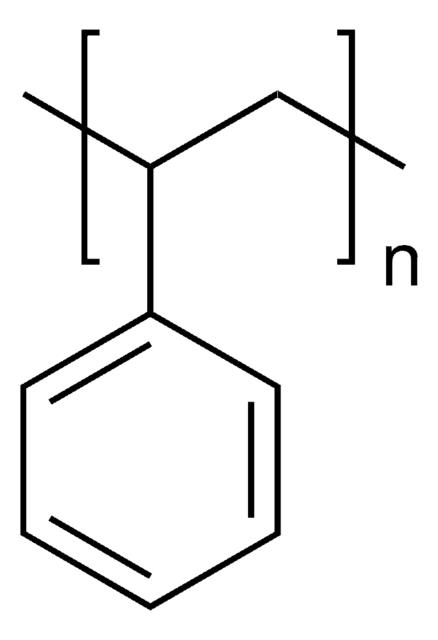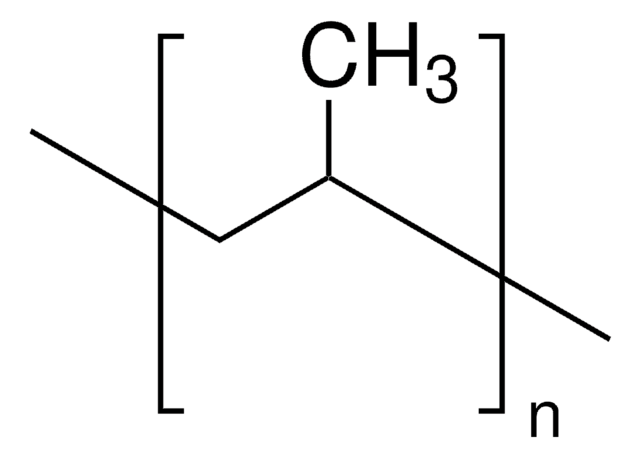441147
Polystyrene
average Mw ~350,000, average Mn ~170,000
Synonym(s):
PS
About This Item
Recommended Products
form
pellets
Quality Level
melt index
2.0-4.0 g/10 min (200°C/5kg)
mol wt
average Mn ~170,000
average Mw ~350,000
impact strength
21 J/m (Izod, ASTM D 256, 23 °C, notched)
impurities
≤5% mineral oil
transition temp
Tg 95 °C
density
1.04 g/mL at 25 °C
elongation
ASTM D 638 - 1.5% (at break)
InChI
1S/C8H8/c1-2-8-6-4-3-5-7-8/h2-7H,1H2
InChI key
PPBRXRYQALVLMV-UHFFFAOYSA-N
Looking for similar products? Visit Product Comparison Guide
Application
Features and Benefits
Storage Class Code
11 - Combustible Solids
WGK
WGK 3
Personal Protective Equipment
Choose from one of the most recent versions:
Already Own This Product?
Find documentation for the products that you have recently purchased in the Document Library.
Customers Also Viewed
Articles
In this article, we discuss issues critical to successful application of the electrospinning technique, including control of individual nanofibers to form secondary structures and assembly of nanofibers into 3D architectures.
Our team of scientists has experience in all areas of research including Life Science, Material Science, Chemical Synthesis, Chromatography, Analytical and many others.
Contact Technical Service



